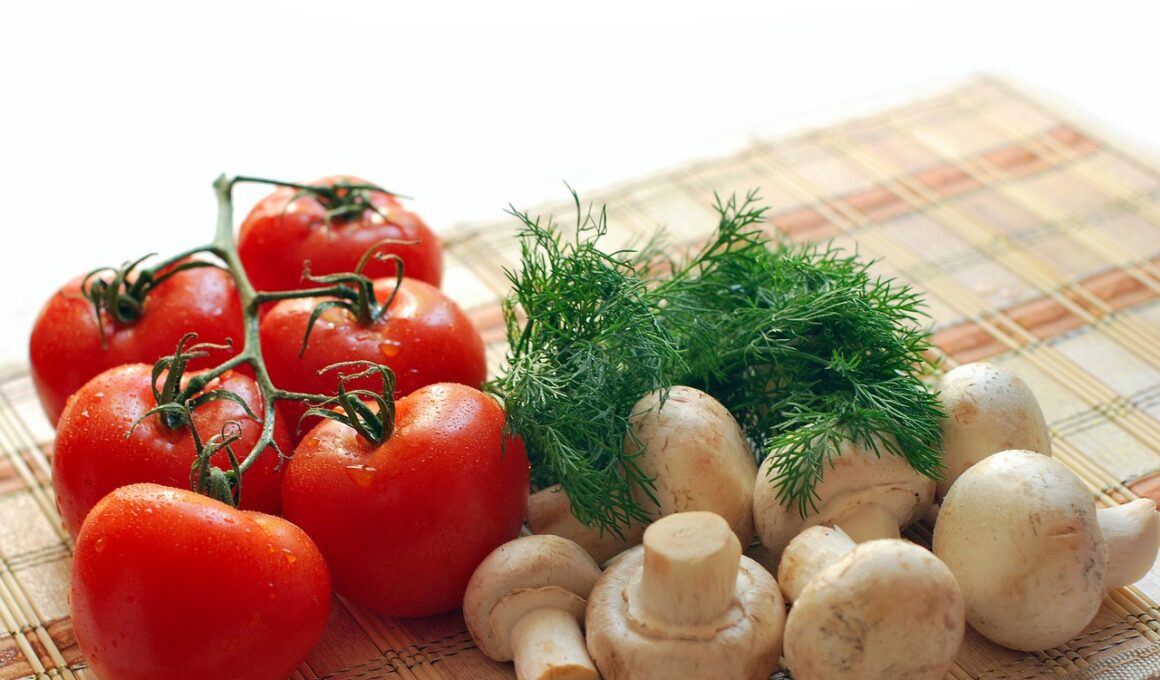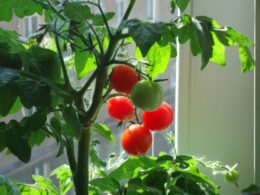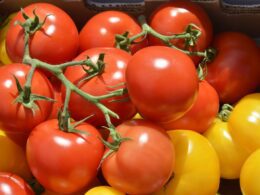You’re out in your garden, admiring the beautiful red tomatoes hanging off the vine, when you suddenly spot one that’s not quite ripe yet. It’s tempting to pluck it right off and give it a taste or try to hasten its ripening process indoors. But hold up – what happens if you pick that tomato too early?
In this article, we’ll explore the ripening process of tomatoes, the consequences of picking them prematurely, and how to determine the perfect time for harvesting. We’ll also share some tips on how to safely ripen tomatoes off the vine so that you can enjoy their full flavor and nutritional benefits without any worry.
So before you reach for that not-quite-ripe tomato, let’s delve into what you need to know about early picking and how it affects these delicious fruits.
The Ripening Process
Can’t help but feel a pang of regret when plucking that not-quite-ripe tomato off the vine, can we? It’s natural to wonder about the ripening process and whether or not it’ll continue once the tomato is separated from its source. Fear not, though! The good news is that tomatoes can still ripen even after being picked early.
This happens thanks to a hormone called ethylene, which is produced by the fruit itself and helps in breaking down cell walls and turning starches into sugars. Now, you might be wondering how exactly you should go about ripening those prematurely plucked tomatoes.
The best way to do this is by placing them in a paper bag or cardboard box at room temperature for several days. Make sure they’re out of direct sunlight and away from any heat sources. You can also add an apple or banana to speed up the process since these fruits release ethylene gas as well, creating an environment that encourages your tomatoes to ripen faster.
So don’t worry too much if you’ve accidentally harvested some green tomatoes – with a little patience and proper storage conditions, they will eventually turn red and juicy just like their vine-ripened counterparts. And remember: sometimes it’s better to pick them slightly underripe rather than risking losing them to pests or bad weather conditions!
Consequences of Picking Tomatoes Too Early
Now, let’s talk about what happens if you pick tomatoes too early. You’ll notice a significant impact on their flavor and texture, which can affect your meals.
We’ll also discuss possible health benefits and drawbacks of consuming these underripe fruits.
Impact on flavor and texture
Picking tomatoes prematurely may significantly compromise their taste and consistency. When you harvest tomatoes too early, they lack the time needed to develop their full flavor potential and achieve the desired texture. This can lead to a disappointing culinary experience, as well as reduced nutritional value.
-
Flavor: Early-picked tomatoes tend to have a more acidic taste, lacking the natural sweetness that comes with proper ripening.
-
Texture: They will often be firmer and less juicy than fully ripe tomatoes, making them less enjoyable for snacking or incorporating into recipes.
-
Color: The vibrant red color that we associate with ripe tomatoes is a result of pigments developing during the ripening process; picking them too early means they might remain green or yellowish.
-
Nutritional value: As tomatoes ripen, they produce higher levels of beneficial compounds like lycopene – an antioxidant linked to numerous health benefits; harvesting early can mean missing out on these advantages.
By waiting for your tomatoes to reach peak ripeness before harvesting, you’ll not only enjoy better-tasting fruit but also ensure that you’re getting the most nutritional bang for your buck! So, be patient – your taste buds and body will thank you!
Possible health benefits and drawbacks
Imagine the incredible health benefits you could be missing out on by not allowing your tomatoes to fully ripen before harvesting – it’s a real game changer! As tomatoes ripen, they develop higher levels of nutrients like vitamin C, lycopene, and antioxidants. These power-packed nutrients are known for their ability to fight off diseases, boost your immune system, and maintain healthy skin.
Picking tomatoes too early means you won’t get the full spectrum of these amazing benefits. However, there’s a potential drawback to consuming under-ripe tomatoes. They contain higher levels of solanine – a natural toxin found in some plants that can cause gastrointestinal issues if consumed in large quantities.
While it’s unlikely that eating an occasional green tomato would cause serious harm, it’s always best to err on the side of caution and let your tomatoes reach their prime for optimal safety and health benefits. So next time you’re tempted to pick those tempting green globes from your garden or buy them at the market, remember that patience can lead to tastier – and healthier – results!
Stages of Tomato Maturity
In the different stages of tomato maturity, selecting them prematurely might lead to underdeveloped flavors and a less appealing texture. As tomatoes develop, they go through various stages that can impact their taste and overall quality. Knowing these stages can help you determine when it’s safe to pick your tomatoes without sacrificing flavor or satisfaction.
-
Green stage: In this stage, the tomato is still growing and not ready for consumption. The skin is firm, and the fruit has a dense texture.
-
Breaker stage: At this point, the tomato begins showing some color – usually a pale green-yellow hue – indicating that it is starting to ripen but may still be too tough for enjoyable eating.
-
Turning stage: The fruit gradually changes color from green to pinkish-red; however, the flavor continues developing during this time.
-
Ripe stage: When fully ripe, tomatoes have deep red or orange colors with slightly soft skin and are bursting with sweet, tangy flavors.
By understanding these stages of tomato maturity, you can ensure that you’re picking your tomatoes at just the right time for optimal taste and texture. Picking tomatoes too early could mean missing out on their full potential, especially if they don’t continue ripening off the vine properly.
So next time you’re in your garden or browsing through produce at the market, keep an eye out for signs of maturity so you can enjoy deliciously ripe tomatoes every time – keeping both your taste buds and safety concerns satisfied!
Will Using Banana Peels as Fertilizer Help Tomatoes Ripen Faster?
Using banana peels as fertilizer has become a popular trend among gardeners due to the benefits of banana peels for tomatoes. These peels are rich in potassium, a nutrient essential for fruit production. However, while banana peels can enhance soil health and promote overall plant growth, there is limited scientific evidence suggesting they directly accelerate tomato ripening. Nonetheless, incorporating banana peels in compost or soil amendments can provide valuable nutrients that support tomato plants’ overall development.
How to Determine When to Harvest Tomatoes
Ready to harvest those tasty tomatoes? Keep an eye on their color and firmness, test them for ripeness, and be aware of environmental factors that can impact their development.
These simple steps will help ensure you’re picking your tomatoes at the perfect time for maximum flavor and enjoyment.
Observing color and firmness
Keep an eye on the color and firmness of those tomatoes, because harvesting them prematurely can affect their taste and texture. As tomatoes ripen, they’ll change from a bright green to a red or orange shade, depending on the variety.
To determine if your tomato is ready for picking, gently squeeze it – a fully ripe tomato will have a slight give without being mushy. Stay alert for changes in your tomatoes’ appearance and feel, as these are signs they’re ready to be enjoyed.
Picking too early may result in bland or sour flavors that aren’t as satisfying as vine-ripened fruits. By waiting patiently for that perfect moment of ripeness, you’ll ensure deliciously sweet and juicy tomatoes that provide both great taste and peace of mind knowing you’ve harvested at the right time.
Testing for ripeness
Imagine biting into a perfectly ripe tomato, bursting with flavor and juiciness – that’s the goal when testing for ripeness during harvest time.
To ensure you’re picking tomatoes at the perfect moment, give them a gentle squeeze; they should feel firm but not hard. If it yields slightly to pressure without feeling mushy, then it’s likely ready to be picked. Keep an eye out for a uniform color and smooth skin as well.
Another reliable method for testing ripeness is giving your tomato a sniff test. A ripe tomato will have a pleasant, sweet aroma emanating from the stem end. Trust your senses; if the smell is inviting and alluring, then it’s probably ready to be enjoyed!
Following these simple tips will help you indulge in safe and scrumptious homegrown tomatoes right off the vine.
Monitoring environmental factors
Monitoring environmental factors is crucial, as it’ll ensure your tomatoes are thriving and developing that mouthwatering taste you’re after. By keeping a close eye on these factors, you can make sure your tomatoes ripen at the right time and minimize the risk of picking them too early.
To help your tomatoes reach their full potential, consider these four vital environmental factors:
-
Temperature: Tomatoes need warm temperatures to grow and ripen properly. Aim for daytime temps between 70-85°F (21-29°C) and nighttime temps no lower than 60°F (16°C).
-
Sunlight: Your plants require at least 6 hours of direct sunlight daily. Make sure they’re not shaded by larger plants or structures.
-
Water: Keep the soil consistently moist but not waterlogged. Too much water will cause splitting, while too little will result in underdeveloped fruit.
-
Nutrients: Feed your tomato plants with a balanced fertilizer to encourage growth and development. Proper nutrition helps them produce those tasty fruits.
By keeping a watchful eye on these environmental factors, you’ll be creating a safe space for your tomato plants to flourish. In turn, this will lead to ripe, juicy tomatoes that are perfect for picking when the time is right!
Tips for Ripening Tomatoes Off the Vine
Don’t stress, there’re ways to ripen those tomatoes off the vine and still enjoy their delicious taste!
One of the easiest methods is to place your unripe tomatoes in a brown paper bag or cardboard box with a ripe banana or apple. These fruits release ethylene gas, which helps speed up the ripening process. Just make sure to keep an eye on them and check every day for progress, as you wouldn’t want them to overripen.
Another tip for ripening your tomatoes is to simply let them sit on a windowsill that receives indirect sunlight. This method may take a bit longer than using ethylene gas, but it’s perfect for those who prefer a more natural approach. Remember, patience is key – it might take several days before you notice any change in color and firmness.
One last piece of advice: when choosing which tomatoes to pick early from your garden, opt for ones that have at least started turning from green to their final color (whether that be red, yellow, orange or other varieties). These partially-ripe tomatoes will have an easier time reaching full maturity off the vine compared to completely green ones.
With these simple tips and some patience, you’ll soon be enjoying those tasty homegrown tomatoes even if they were picked too early!
Conclusion
So, you’ve learned the importance of timing when it comes to picking tomatoes. Remember, harvesting them too early can lead to less flavorful and underdeveloped fruits.
Don’t worry though – if you find yourself with unripe tomatoes, use those handy tips for ripening them off the vine.
With a little patience, you’ll soon be enjoying delicious and juicy homegrown tomatoes!









